Here is a picture of the ".455 Family" which I had in my personal arsenal in 2007 ... the family has been enlarged a fair bit since then, so I guess I should really get around to taking another "family portrait" ...
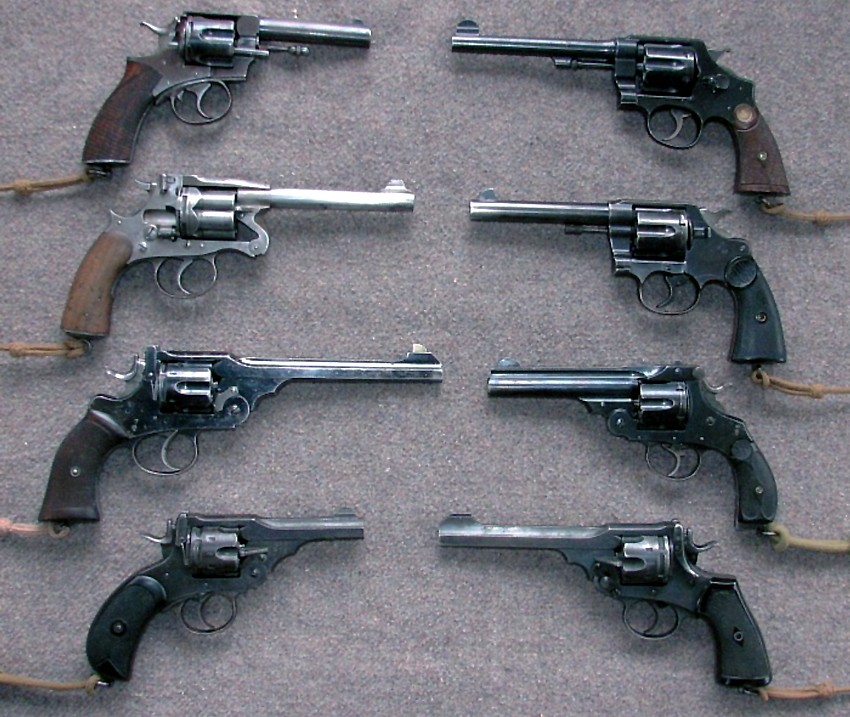
The revolvers in this photo are: left column, top to bottom - .450/.455 Webley R.I.C. New Model, .476 Mark II Enfield (documented NWMP revolver), .455/.476 Webley "W.G." Target Model, .455 Webley Mark V; right column, top to bottom - .455 S&W 2nd Model Hand Ejector (documented WWI Canadian government purchase), .455 Colt New Service, .455 "O.P." revolver (Spanish-made S&W clone, British WWI purchase for secondary issue), .455 Webley Mark VI (engraved private-purchase sidearm of a Lieutenant in the WWI Canadian Expeditionry Force).
If you happened to note that I called this my ".455 Family", you might be a bit confused by the ".476" calibere designation which crops up a few times in the above descriptions. In fact, despite the the differing nominal calibre designations of the 19th Century British breechloading service revolvers and their cartridges - i.e. ".450" (Adams revolvers), ".476" (Enfield revolvers) and .455" (Webley revolvers) -
all of them were in actuality .455 calibre ...
Here are a few of the newer members of my .455 Family, added since the above group shot was taken -
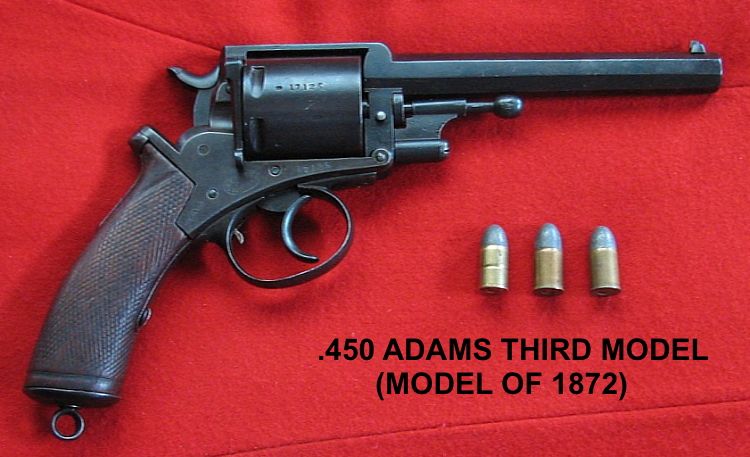
The Adams (in three "Marks", i.e. models) was the first British metallic cartridge military service revolver, and was also the first standard-issue revolver of Canada's North-West Mounted Police from its founding in 1873. (This particular revolver is a commercial production example, and is thus referred to as a "Third Model" rather than as "Mark III".)
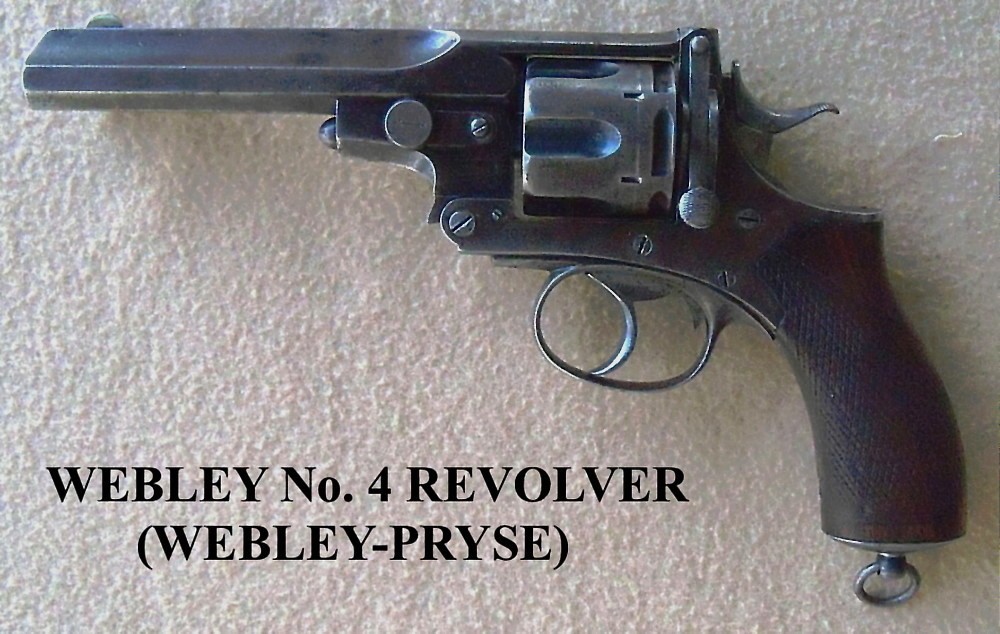
Although Webley had been producing various models of double-action cartridge revolvers, as preferred by the British, for years, this is their first "top-break" model, first introduced in 1878.
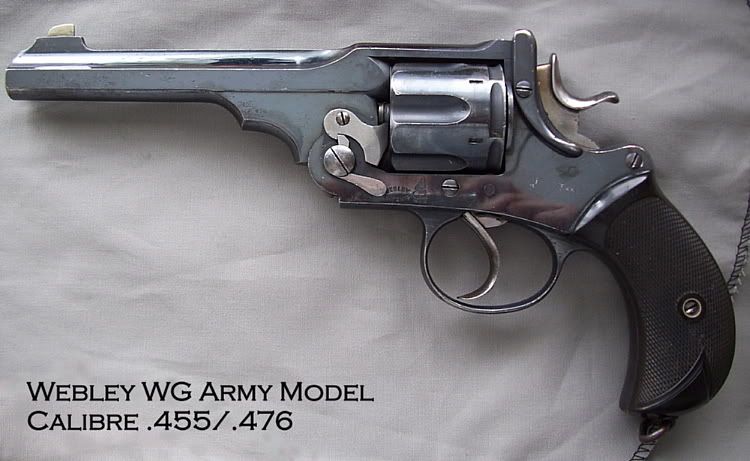
Despite the "Army" designation given to this model by Webley, it was not a "service revolver" model adopted by the British War Department. Rather, the designation was intended to convey the fact that it was chambered for the ".476' and ".455" military service revolver cartridges and that it would be a suitable revolver for private purchase by officers (who in fact were obliged to supply all of their own uniforms and kit, including weapons, at personal expense.
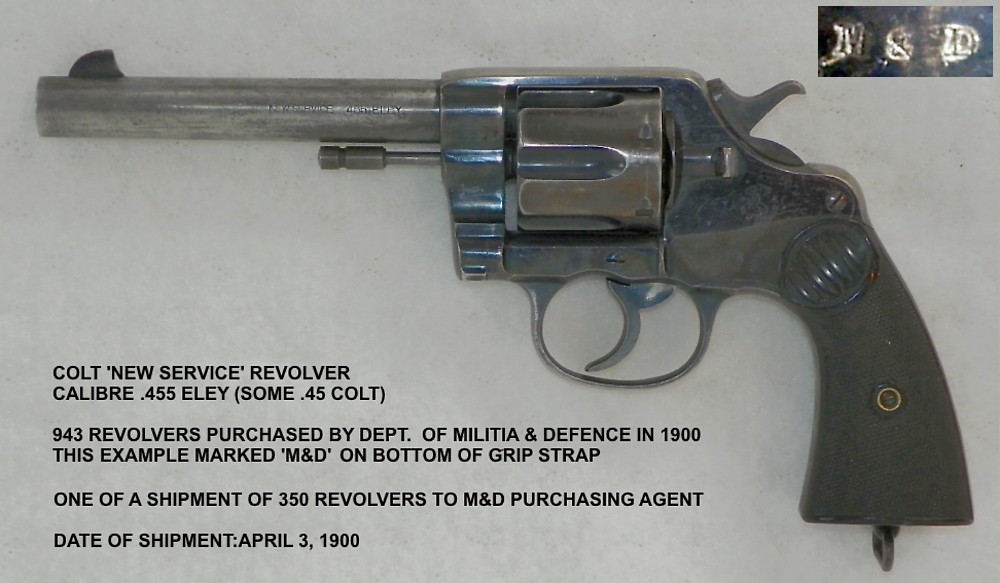
This is one of two .455 Colt New Service revolvers I have added, both of the earliest model and manufactured in late 1899 or early 1900 (whereas the revolver in the above shot is a WWI-vintage revolver of the later configuration.) This particular revolver bears the "M&D" property marking of the Canadian Department of Militia and Defence, and is one of a batch purchased for Boer War service.